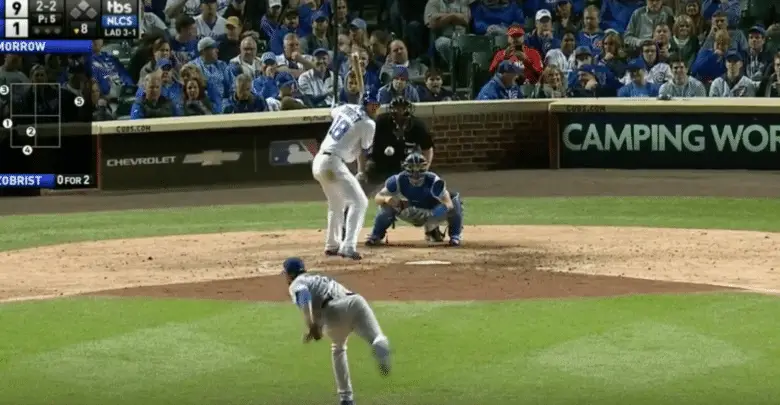
Brandon Morrow’s Freakish Numbers Suggest He’s Worth Risk for Cubs
Remember the feeling when Brandon Morrow jogged out of the Dodgers bullpen to face the Cubs in those NLCS games? I remember and I’m sure the Cubs front office does as well. That level of dominance is exactly what Theo and Co. envisioned when they signed the former starter to a two year, $20-22 million contract (final numbers TBA).
The 33 years old Morrow has had a tumultuous MLB journey, starting as the fifth overall pick in 2006 to nearly being pushed out of the league by injuries. A forearm flare-up in 2011, oblique strain in 2012, nerve entrapment in 2013, torn tendon sheath in 2014, and shoulder impingement in 2015 defined his career before the Los Angeles Dodgers decided enough was enough when it came to starting. And so, Dodgers’ president Andrew Friedman fashioned the flame-thrower into a reliever. One year later, Morrow became one of the most attractive relief arms on the free agent market.
Injuries may have taken away Morrow’s dreams of starting, but they didn’t hurt his pitch movement or velocity. As a reliever, the former Dodger stopped throwing splitters and curves in order to optimize his three best pitches: four-seam, slider, and cutter. These weapons were among the league’s best in terms of velocity, movement, and control.
Morrow’s four-seam averaged ~98 mph, faster than almost 95 percent of all such pitches thrown in 2017. Locating the heater in past years was problematic for the righty, but he exhibited increased accuracy with LA this past season. For example, in 2015 and ’16 (left image, 49 innings), Morrow typically located heaters inside and out of the zone to righties. We don’t really know why that was, but we can’t rule out that injuries is the prime reason for being outside the zone. Regardless, Morrow’s heater location was much more focused in 2017 and was more in the strike-zone (right image).
So that’s great and all, but where Morrow separates himself is that very few other pitchers can throw a slider and cutter with as much movement and velocity. I wonder what Jason Heyward thinks of Morrow’s 92 mph cutter.
Get used to seeing that amount of horizontal movement in Cubs pinstripes. Only 4 percent of MLB cutters last year were thrown with more darting action than Morrow generated. And again, his cutter averages 92 mph. That’s insane.
Hey, Kyle Schwarber, what do you think of Morrow’s slider?
Imagine digging in and having to prep for that cutter we saw above. You detect what you think is that same spin, but no sooner have you realized your grievous error in judgment than the slower breaking pitch drops off the table. Whiff. And it’s not just that Morrow’s slider drops more than his cutter, it’s that it boasts more vertical drop than 87 percent sliders thrown by relief pitchers in 2017.
Morrow’s trio of deadly pitches generated laughable whiff numbers last year. Using data as far back as 2012, his cutter produced more swings and misses than 99.9 percent of all relievers. His four-seam and slider also ranked in the upper percentiles. Laughable, indeed.
| Pitch | Whiff | Percentile |
| Four-seam | 12.2 | 79.2 |
| Cutter | 19.4 | 99.9 |
| Slider | 22.8 | 87.4 |
Morrow doesn’t come without red flags, though. We have already discussed his well-documented injury history, but usage could be an issue as well. He only accumulated 63.2 regular-season innings between AAA and MLB last season, and Dave Roberts leaned heavily on (abused?) the reliever in the playoffs. Whether Morrow can maintain his freakish numbers given in light of all that is a big question because, well, he’s never done it before.
Where we may find hope, however, is in the Cubs’ special knack for avoiding major arm injuries at the big-league level. Consider that not one starting pitcher has missed significant time under the tutelage of Theo Epstein and his staff. That’s a testament to both the hard work of players the Cubs acquired, the executives who recognize reliable arms, and the training staff that sees to them throughout the year. So I’ll give the benefit of the doubt to the Cubs front office here.
I don’t know if Morrow can stay healthy. What I do know is that, when healthy, he’s one of the best relief arms in the game, with a cutter maybe only the young Dillon Maples can rival.




